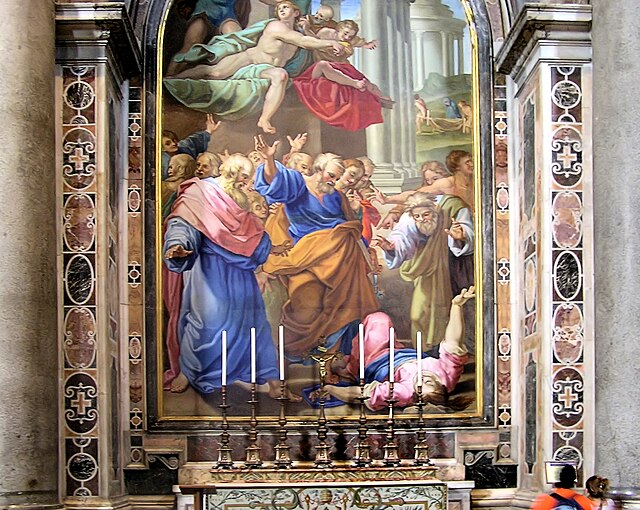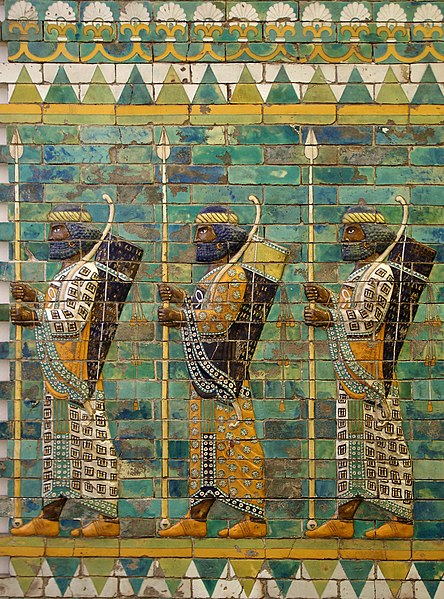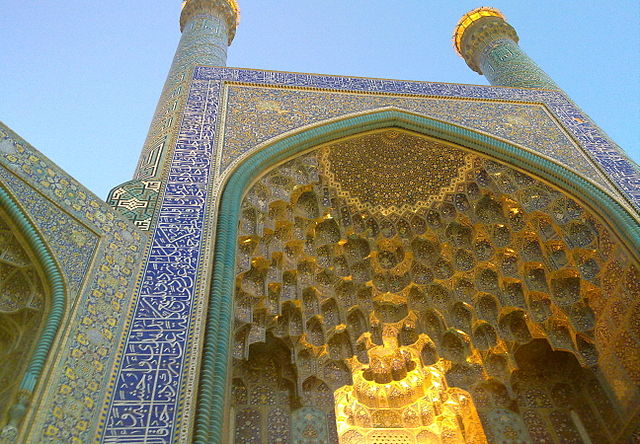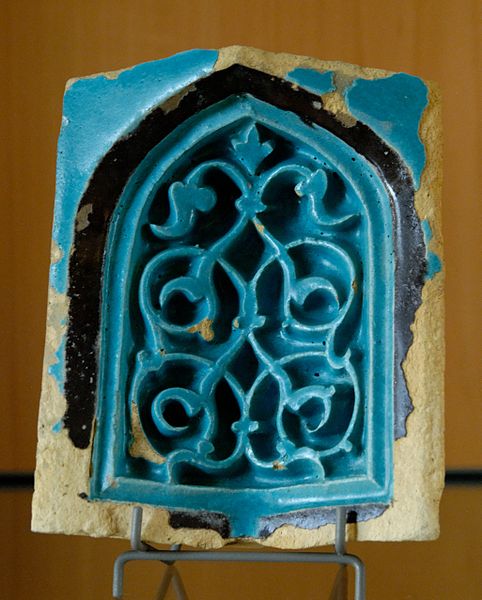A tessera is an individual tile, usually formed in the shape of a square, used in creating a mosaic. It is also known as an abaciscus or abaculus.
The unique illuminating effect of golden tesserae, Cappella Palatina in Palermo, Sicily, 12th century
A mosaic made from tesserae in St Peter's Basilica, Vatican State, Italy
A close up of the bottom left corner of the picture above. Close inspection of the full picture reveals the individual tesserae.
Apse mosaic of the Virgin Mother and Child, Hagia Sophia, featuring intensely luminous golden tesserae
Tiles are usually thin, square or rectangular coverings manufactured from hard-wearing material such as ceramic, stone, metal, baked clay, or even glass. They are generally fixed in place in an array to cover roofs, floors, walls, edges, or other objects such as tabletops. Alternatively, tile can sometimes refer to similar units made from lightweight materials such as perlite, wood, and mineral wool, typically used for wall and ceiling applications. In another sense, a tile is a construction tile or similar object, such as rectangular counters used in playing games. The word is derived from the French word tuile, which is, in turn, from the Latin word tegula, meaning a roof tile composed of fired clay.
Art Nouveau tiles in Brussels (Belgium)
Relief made with glazed brick tiles, from the Achaemenid decoration of Palace of Darius in Susa.
The Shah Mosque in Isfahan, Iran
Timurid turquoise-glazed muqarna. First half of the 15th century, Shah-i-Zinda








